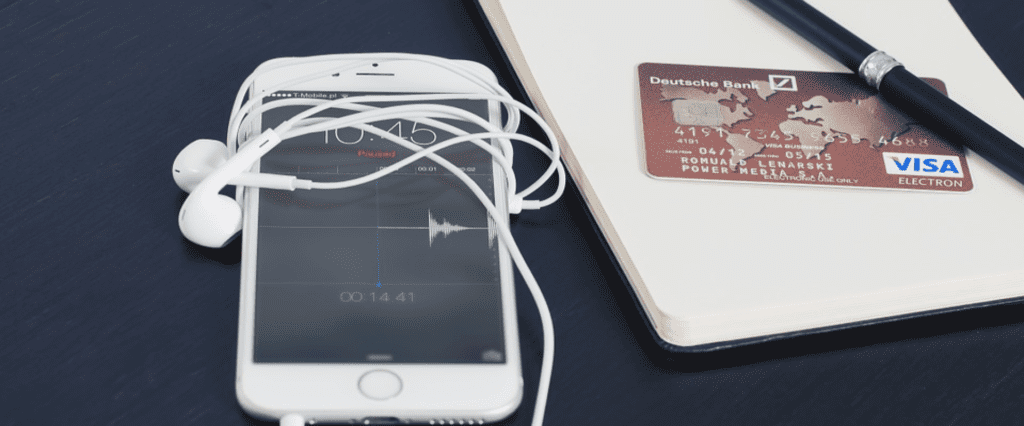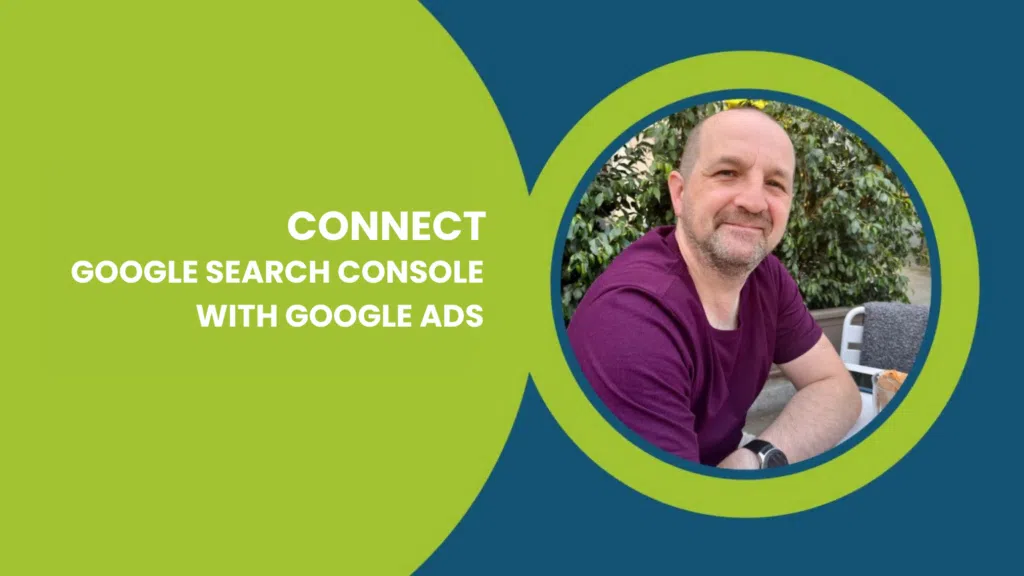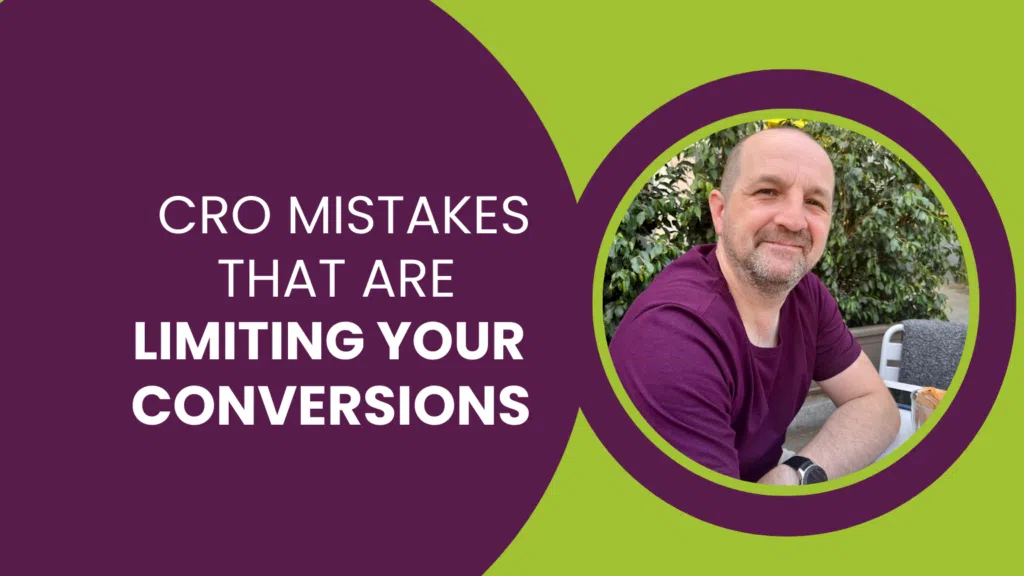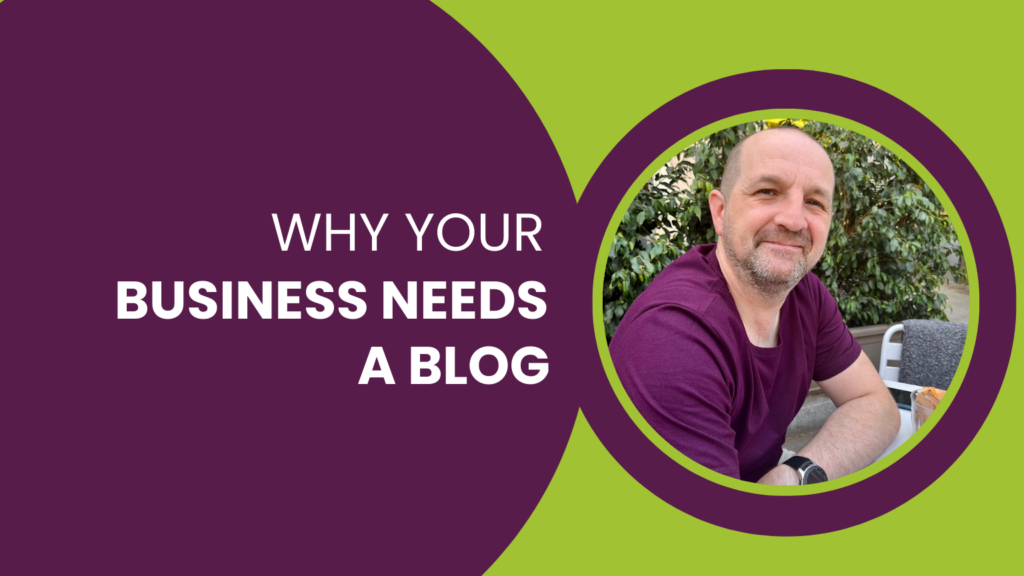Regular Google searchers (aren’t we all?) will have noticed that the presentation of the SERPS, the search results you get on Google once you’ve submitted your query, have changed dramatically over the last few years, particularly on mobile devices.
Depending on the search query, Google presents different stacks of results from different databases within its system.
A search for a “strawberry pavlova” shows the Recipe Stack (organic) and the Image Stack (organic). Note the absence of Google text ads above the fold and the absence of Google Shopping ads.
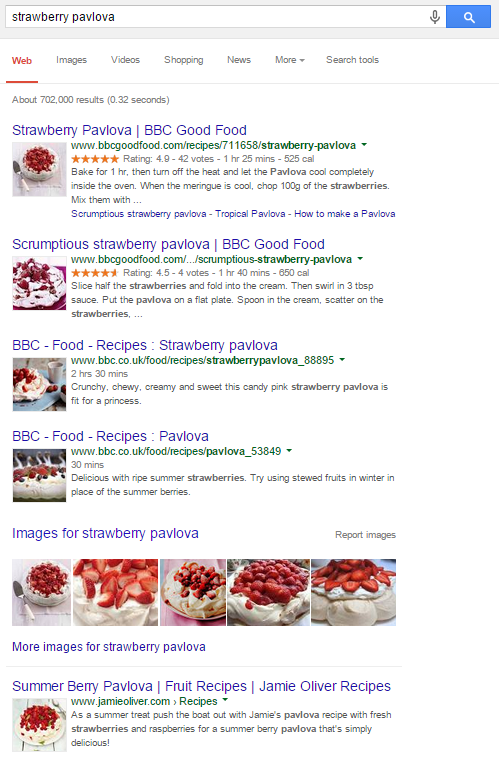
A search for, “who invented the strawberry pavlova” presents the Organic Stack with reference pages and continues with organic Recipe listings. Still no Google AdWords text ads or Google Shopping Ads.
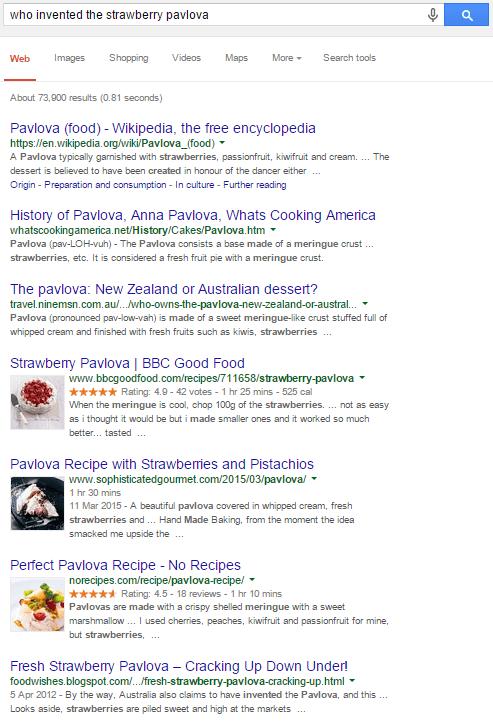
A search for, “how to make a strawberry pavlova” shows a rich snippet, Google text ads (finally! – though fairly low quality), more recipe results (which I probably want with a search query like this). Still no Google Shopping ads.
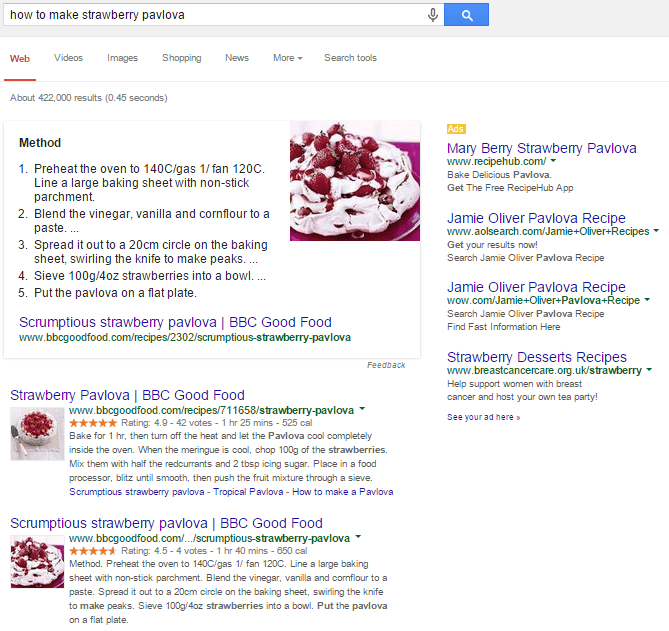
Search for, “dessert shops London” and you’ll get a Google text ad, the Local Stack and then organic results. Still no Google Shopping Ads!
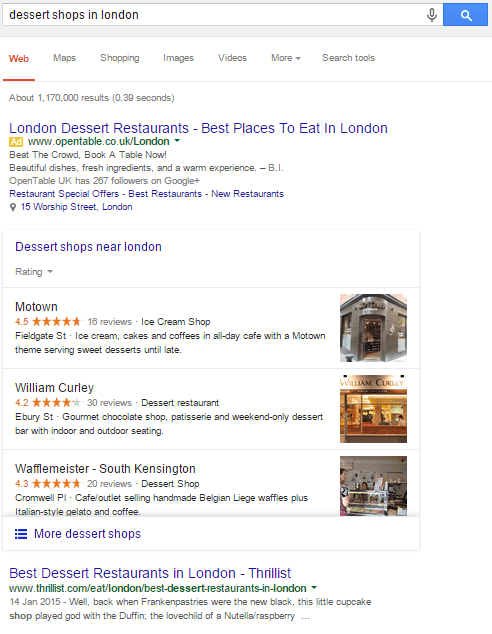
Finally, searching for “buy strawberry pavlova” reveals some Google Shopping ads. Recipes are still the first Organic Stack in the main body of the SERPS, Google Shopping dominates the first part of the paid stack, with just two AdWords text ads presented.
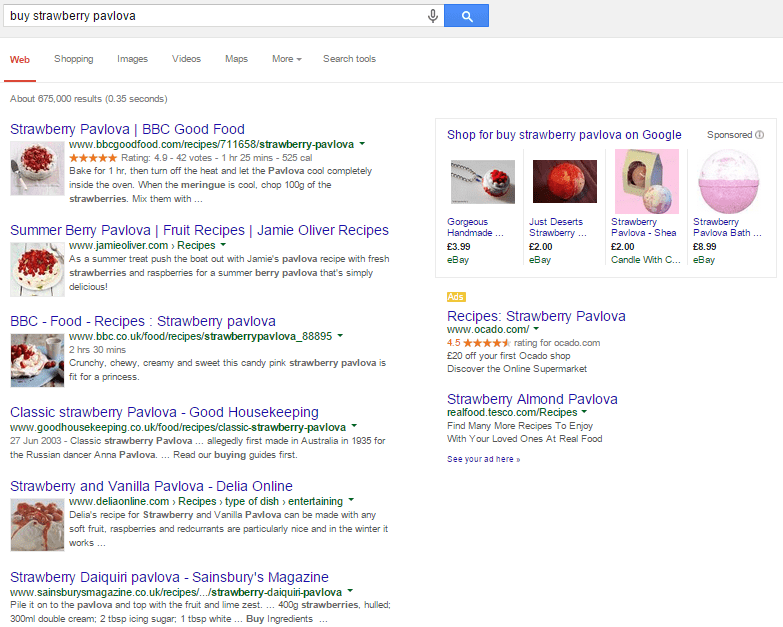
Our eCommerce Marketing Services
Why This is Critical To Your eCommerce Marketing Strategy
One of the biggest changes among the different stacks in recent times has been the Google Shopping Stack, say our eCommerce marketing specialists.
More: How Google Shopping Works
The short version: your eCommerce store should hopefully have a method of outputting the inventory from your site in a format ready for Google Shopping, thus allowing you to share your inventory, stock, prices and descriptions of your products with a Google Merchant Centre account and then with a Google AdWords Account.
You then bid on your inventory against competitors in an auction for clicks as users search for products which match their query.
A Brief History of Google Shopping
Google Shopping started life as an organic shopping stack in the middle of a standard organic stack. eCommerce stores could open an account for free and clicks were free too.
As the system developed, Google changed to a Pay per Click only model. It knows that the traffic is valuable and that advertisers will pay for those clicks.
Why The Performance Data is Alarming
Our Google Shopping Experts reviewed Google AdWords performance data over recent months from a range of accounts:
- The average cost per click (CPC) is lower than standard paid search campaigns.
- The average cost per conversion is typically lower than standard paid search campaigns.
- The conversion rate is marginally lower than standard paid search campaigns.
- In recent months, Shopping Campaigns have produced significantly more traffic than standard paid search campaigns for many eCommerce stores.
The growth of mobile traffic is undisputed. Google’s own data reveals that 67% of online purchases in the UK begin with a mobile search and that 40% of online purchases are completed online too.
The presentation of Google Shopping results has changed significantly on mobile devices too.
Why You Should Be Afraid for Your eCommerce Traffic
Shopping results are dominating the SERPS for shopping queries. If you’re not running Google Shopping Campaigns for your eCommerce site, you’re really going to struggle to continue to get traffic from paid search campaigns.
Google is experimenting with the exact format, but it’s quite common to see just one lonely ad in the Paid Search Stack at the top of the SERPS, with the Shopping Stack surrounding the ad like a group of playground bullies.

The Organic Stack is still presented, with a second segment of the Paid Search Stack way below the fold at the bottom of the page.
Historically, it was possible to make plenty of sales by keeping your bids low and hovering around Position 5 in the Search stack for shopping queries.
That strategy is no longer reliable. There is often no Position 5 in paid search on the first page of Google.
Position 1 is the only place to be for paid search if you want all the traffic you can buy. The response rate in Position 2 is significantly lower than Position 1 if your ad is tucked away at the bottom of the page.
Whilst Google’s double-serving policy applies to Paid Search, it doesn’t apply to Google Shopping listings. A general query for “hdmi cables” could easily show six shopping results featuring inventory selected from just three or four advertisers.
That means that where there were 10 ad slots available on Paid Search, representing 10 different advertisers bidding on that keyword, the paid results might now represent just five – six Shopping Ads and three Paid Search ads.
That is why Google Shopping is essential for eCommerce success and it’s time to go big, or go home.
Speak with a SpecialistOur Google Shopping Services

